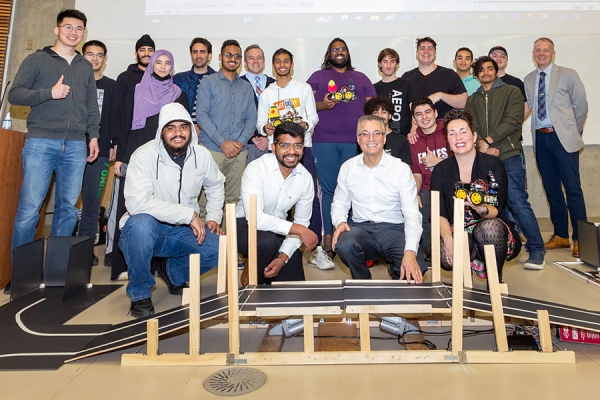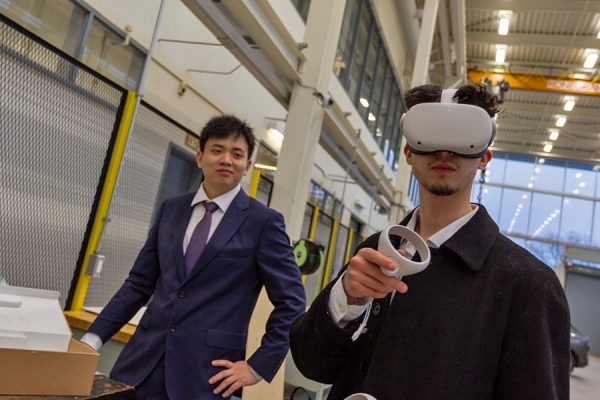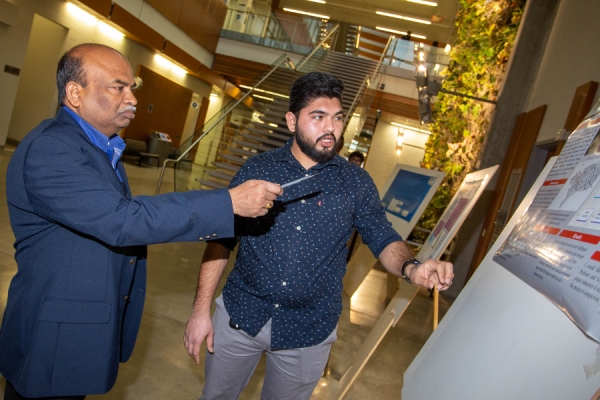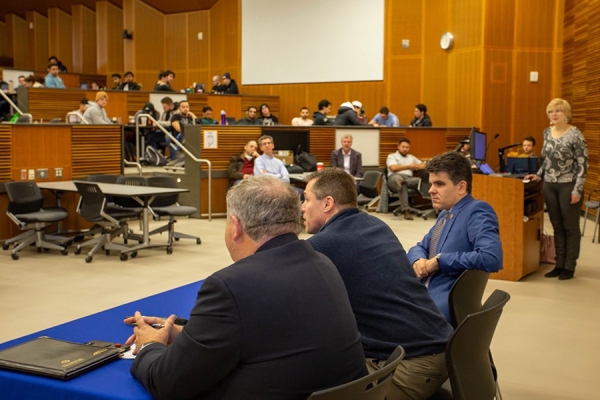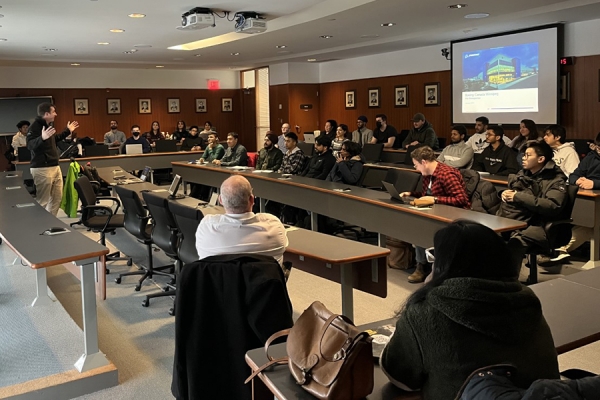 Associate dean of engineering for professional programs Peter Frise, right, welcomes new students to the Master of Engineering program.
Associate dean of engineering for professional programs Peter Frise, right, welcomes new students to the Master of Engineering program.
Faculty, staff, and students welcomed more than 500 Master of Engineering (MEng) students to the University of Windsor at an orientation session Tuesday, May 2.
The day included a cricket match on the big screen, a light lunch, and presentations on academic policies, course requirements, faculty advising, immigration guidance, student rights, peer support, mentorship, and clubs and social events.
“It is great to see so many bright students coming to Windsor from around the world to earn their Master of Engineering degree,” said Peter Frise, associate dean of engineering for professional programs.
“These students worked hard to get here, with the support of their families, and we are proud that they chose the University of Windsor’s MEng program as an entree into an engineering career in Canada.”


